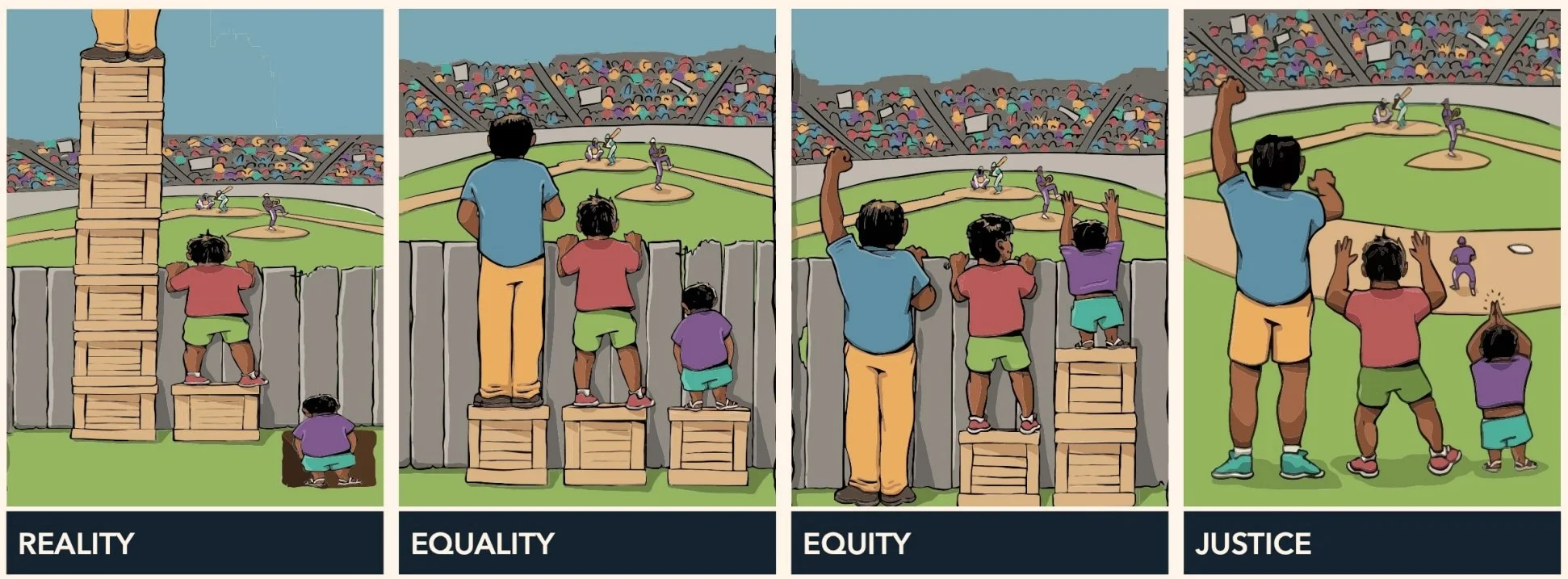Equitable Sliding Scale pricing
sTATEMENTS TO GUIDE YOU
Corresponding with each pricing tier is a list of statements to guide you in choosing the appropriate rate for you. They are not exhaustive and there are many experiences and situations not covered here, so place yourself as best you can and choose which one feels most in alignment with your present experience. This process may feel uncomfortable, and that is okay. What would it be like to approach discomfort with curiosity?
image by @restoringracialjustice
sliding scale TIERS
-
You are choosing to pay the standard market rate for counseling services in Virginia.
*Why Does Therapy Cost So Much? - an excellent breakdown for those curious about therapists' prices and income
Considerations:
I have a relatively high degree of earning power due to level of education, gender identity privilege, racial privilege, class background and privilege, sexual orientation, age, ability, etc.
I comfortably meet all of my needs and many of my financial wants
I own or rent the home I live in and I am able to make all rent/mortgage and utilities payments with ease
I own, lease, or easily pay a loan on the vehicle that I drive
I often have expendable income and can usually buy new items, experiences, and services with ease
I have at least some savings, investments, retirement accounts, and/or inherited money
I take trips and vacations without financial uncertainty or burden
My career is stable and moving forward
-
This rate is slightly below the standard cost of providing the service, while remaining sustainable for myself as a provider.
Considerations:
I make an average income relative others in my city or area
I have some savings and investments
I have housing stability and can pay my rent/mortgage
I have some expendable income and can buy some new items, experiences, and services as I want them
I take occasional trips or vacations
I may have some debt, but still comfortably meet my basic needs
I have a few assets
I sometimes help my friends and family with money
-
You are engaging in a system of mutual aid. This rate is below the cost of providing the service, offered to those with less access to financial resources.
*If this is not accessible for you, I set aside a limited number of deep sliding scale and pro-bono spots for BIPOC and folks with disabilities.
Considerations:
I experience discrimination in hiring or pay level due to level of education, gender identity privilege, racial privilege, class background and privilege, sexual orientation, age, ability, etc.
I make a low income relative others in my city or area
I have difficulty meeting my basic needs each month
I currently have housing stability with a living space that I can afford, but it does not meet all of my needs, or I am struggling to keep up with my rent
I have significant debt
I am living paycheck to paycheck
I have medical expenses not covered by insurance
I am supporting others with my income (children, other dependents, family members, etc.)
I have no assets or am making payments on my assets
So much gratitude to my mentor and friend Rachel Boggan for their guidance and setting an example of a practice that prioritizes community care. Gratitude as well to Chynna Haas, Britt Hawthorne, and Little Red Bird Botanicals, for designing these scale models and for their invaluable contributions towards dismantling harmful systems and building economic justice. Language of the guidance statements adapted from Chynna Haas.
“The scale is intended to be a map, inviting each of us to take inventory of our financial resources and look deeper at our levels of privilege. It is a way to challenge the classist and capitalist society we live in and work towards economic justice on a local level … A sliding scale is a tool for building economic justice, and it requires your active participation. If a sliding scale is implemented effectively, everyone pays a similar percentage of their income for the same products or services. A wide range of payment options across the scale promotes broader accessibility, while ensuring fair compensation to the producer. Paying according to one’s available resources creates a more equitable system for pricing of products and services.” - Little Red Bird Botanicals
“If it feels uncomfortable, it should. Our discomfort is required for justice.” - Britt Hawthorne

